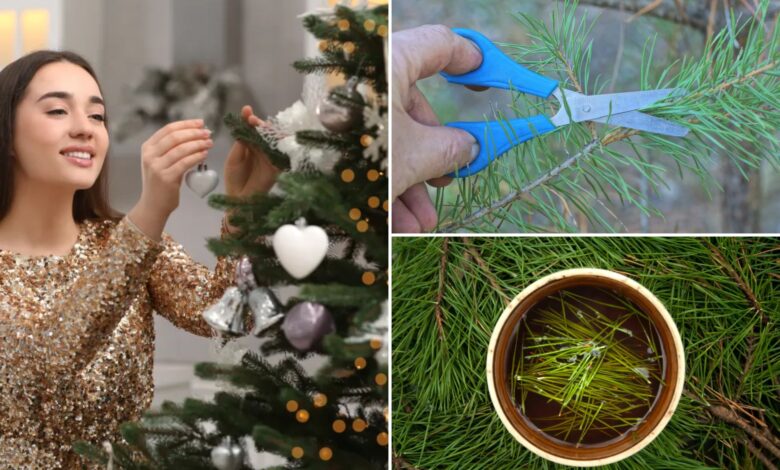Can you eat leftover Christmas tree? ‘Pine needle tea’ may boost immune system

You’ve worked your way through the leftover ham, mashed potatoes, green beans and pie — but have you considered eating your Christmas tree?
Between 25 million and 30 million real Christmas trees are sold in the US each year, according to the National Christmas Tree Association. Many homeowners drag their castoff evergreen to the curb in the first few days of January to recycle it.
Yet there are many ways to repurpose your used pine, fir or spruce at home. You could cut it up for firewood, shred it for mulch, build a bird sanctuary with the branches — or you could harvest the needles and transform them into shortbread cookies.
“The way that generally I cook with [Christmas trees] is to use the needles like an herb, in the same way that you might use rosemary. You use the rosemary to flavor a dish but you don’t necessarily eat the rosemary itself,” UK-based artisan baker and cook Julia Georgallis, author of “How to Eat Your Christmas Tree,” told Christopher Kimball’s Milk Street last week.
Georgallis’s cookbook, published in 2020, contains more than 30 recipes for everything from Christmas-cured fish to Christmas tree vinegar and Christmas tree & ginger ice cream.
One popular use for pine needles, especially in Asia, is transforming them into tea.
Pine needle tea is rich in antioxidants, vitamin A and vitamin C, which can boost immunity and soothe colds, according to the Ohio Department of Natural Resources.
Also, WebMD reports that certain molecules in pine needles, particularly anti-inflammatory flavonoids, can bind to a specific receptor in the body that plays an important role in regulating metabolism.
To get this par-tea started, go for white pine, easily identifiable by its clusters of five needles.
Cut the needles into smaller pieces, add them to boiling water, remove from heat, let steep for 10-20 minutes and strain. Or you can buy pre-packaged organic pine needle tea bags.
“To make pine needle tea’s flavor more mild, enjoy it iced,” registered dietitian nutritionist Kate Spurgin recently told Well+Good. “For a more familiar taste, try it blended with your favorite [herbal] teas.”
Tips for eating your Christmas tree
- Stick to pine, fir and spruce trees. Cedar, cypress and especially yew trees should be avoided because they can be toxic or inedible.
- Beware trees sold at grocery stores or in parking lots that may have been sprayed with chemicals.
- Wear gloves while cutting boughs and wash the branches under cold, running water to remove mud and dirt.
- Use large, sharp scissors to cut upwards so the needles can fall into a large bowl. Wash the needles before use.
- Avoid consuming uncooked, un-chopped needles, which are often very sharp.




